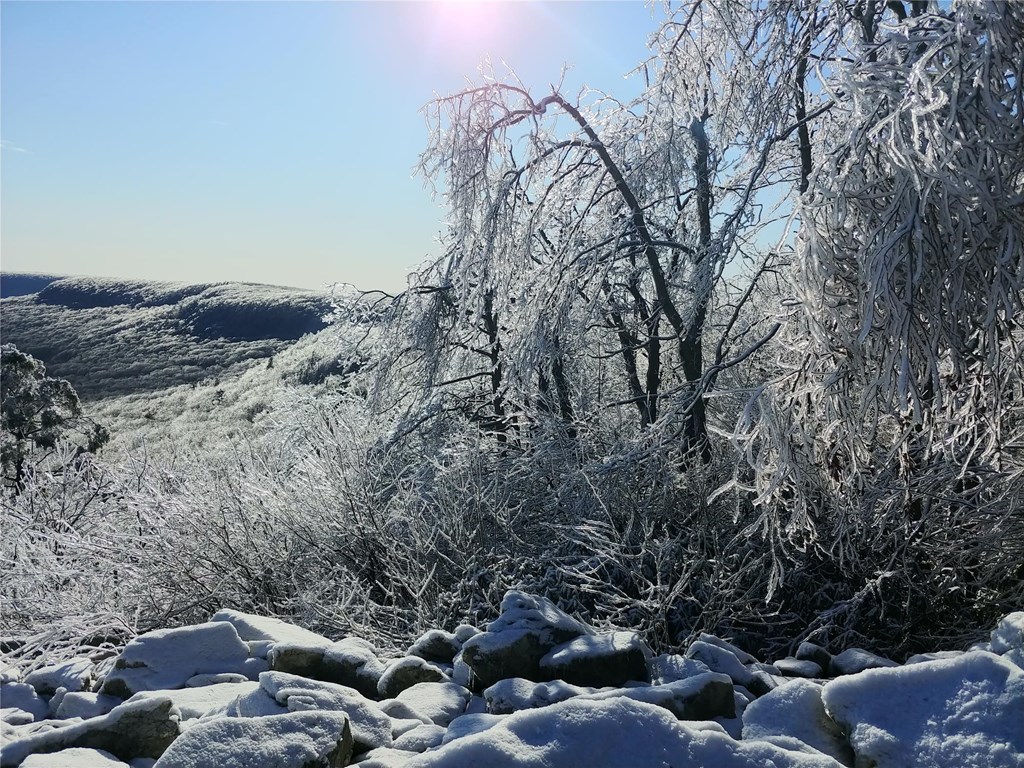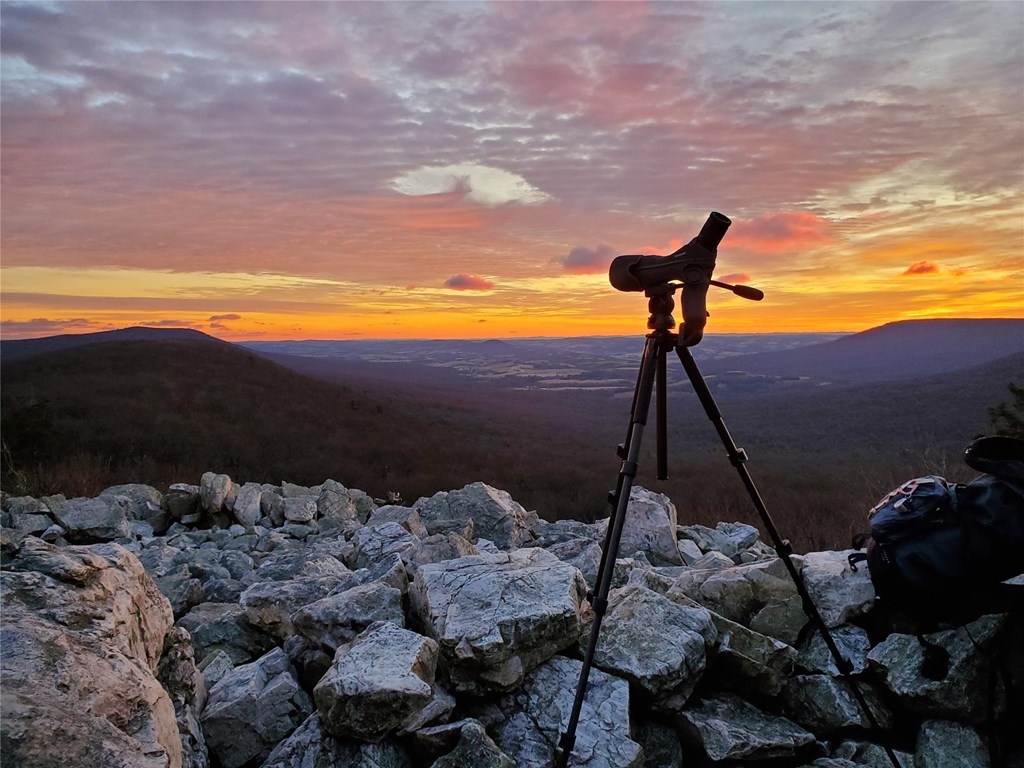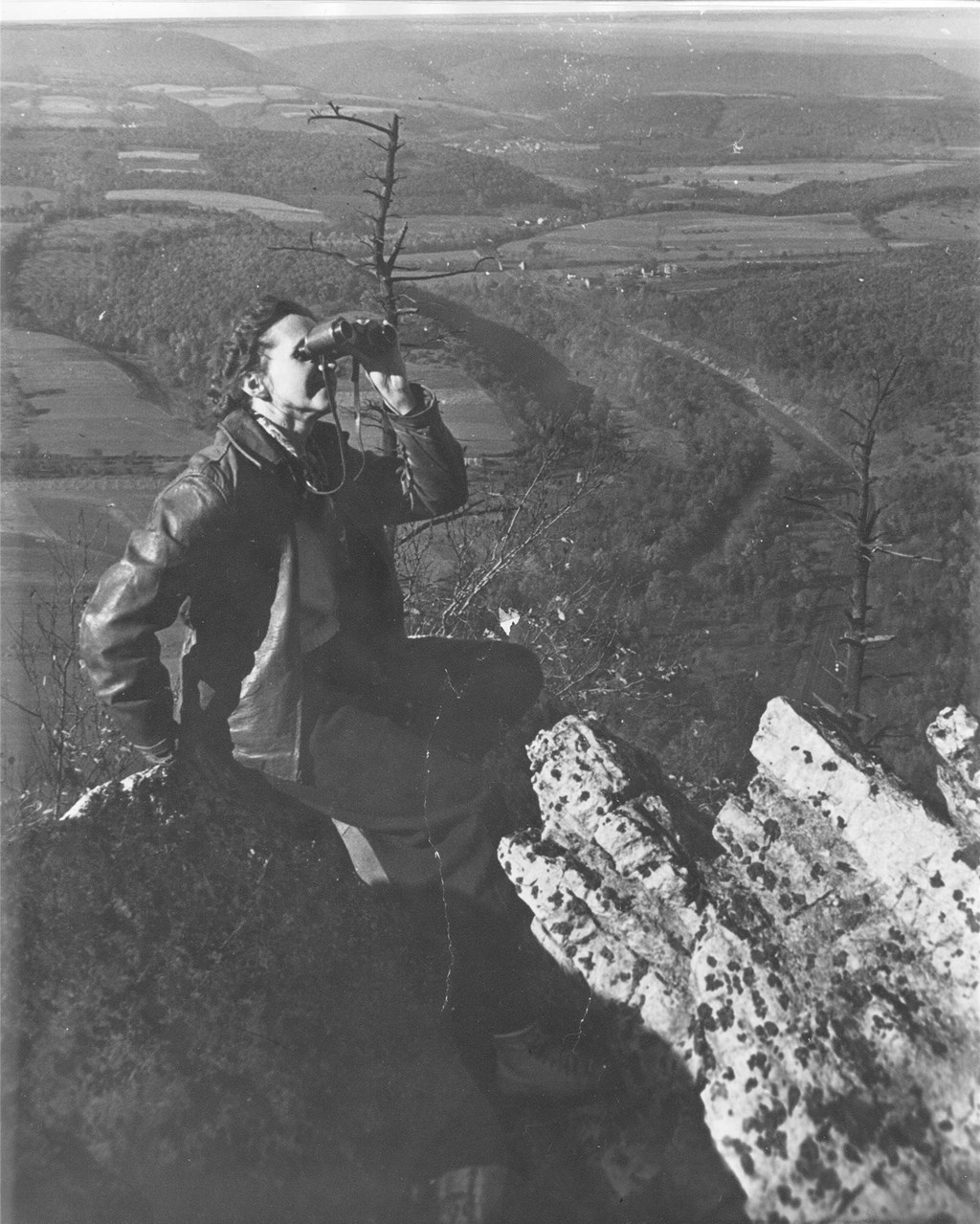The Decade is Down for the Count
Posted on in On the Mountain by Hawk Mountain Staff

By Rebekah Smith, Science-Education Outreach Coordinator
This past Sunday, December 15, 2019 marked the final migration count of the decade for Hawk Mountain Sanctuary. Volunteer Matt Wlasniewski braved wind gusts of over 20 mph, cloudy skies, and 40-degree temperatures from the counter’s pit to count 19 bald eagles as they passed over North Lookout on their way to warmer weather. He also noted 9 red-tails and a single sharp-shinned hawk. Our strong numbers on closing day indicate that there is still a chance to see close eagles, red-tails, and goshawks on days with strong northwest winds. It’s a bitter-sweet moment for us as our most exciting season of the year draws to a close, but we’re eager to get out of the cold and celebrate the holidays with our families and friends. Within just days of the count finale, Hawk Mountain was bathed in a sheet of ice, a jarring reminder that winter is at our door.

Perhaps the one of the most interesting things to observe as a counter is the seasons changing from the lookout. Thursday, August 15 was a different world full of green leaves and air thick with the haze of late summer. That day, we observed our first official migrant – an osprey travelling on south westerly winds. Since, we’ve counted a total of 12,984 migrants passing over the lookout. Though that 12k total sounds awe-inspiring, it’s actually 28% below our 10-year average. According to David Barber, our senior research biologist and raptor count specialist, this has been our lowest count in the past 10 years, a bleak harbinger for the closing of the decade. Of the 16 raptor species we observe, 13 of them were below their 10-year average. One explanation for the poor season could be the lack of strong, prolonged cold fronts, resulting in less than optimal migration conditions. In response, the birds could have migrated by an alternative route. Another possibility is that some of the late season migrants have yet to pass through the region, suggested by the strong final count day.
Other big watch sites in the east, such as Cape May, also have experienced a decline in migrants this year. Of course, conclusions can’t be drawn until our count has been added to the vast HMANA hawkcount.org database that includes small and large watch sites from all over the continent. Accurate speculation about population trends cannot be achieved without collaboration from local and national hawk watch sites. For example, easterly winds during the third week in September pushed migrating birds further west. As a result, some central Pennsylvania watch sites had outstanding broad-winged counts where ours faltered.
Although the Autumn 2019 count seems to be a foreboding end to the current decade, we are reminded of the immense value that long-term hawk watch sites hold for raptor monitoring and conservation. Without consistent, standardized collection of migration data we would have not been able to detect these declines in migrants. Not only can we compare this year’s data to the last ten years of count data, we also have access to more than 80 years of raptor migration data thanks to the first hawk watch site in North America – Hawk Mountain Sanctuary. Our Sanctuary now serves as a model for raptor migration sites all over the world. In fact, all hawk watch sites in North America can trace their roots back to training at Hawk Mountain. The founding of HMANA in 1974 was significantly influenced by the board members of the Sanctuary. To this day, Hawk Mountain continues to be highly involved with HMANA, and this remarkable partnership has resulted in the collaboration of over 300 North American hawk watch sites all contributing to long-term raptor migration data.

Although conclusions can’t be drawn immediately, we can still be mindful of what the migration counts tell us in comparison to historical numbers. As Rosalie Edge famously remarked, “the time to protect a species is while it is still common.” We don’t have to wait for the raptor migration count trend to plummet in order to support global raptor conservation efforts. We all have the ability to contribute through making environmentally conscious decisions, informed voting, volunteering, donating, and contributing to the overall raptor conservation discussion. We have the power to make 2020 the start of a new decade in which we work together to create a better planet for raptors and humans alike.
Only within the moment of time represented by the present century has one species–man–acquired significant power to alter the nature of the world.
– Rachel Carson